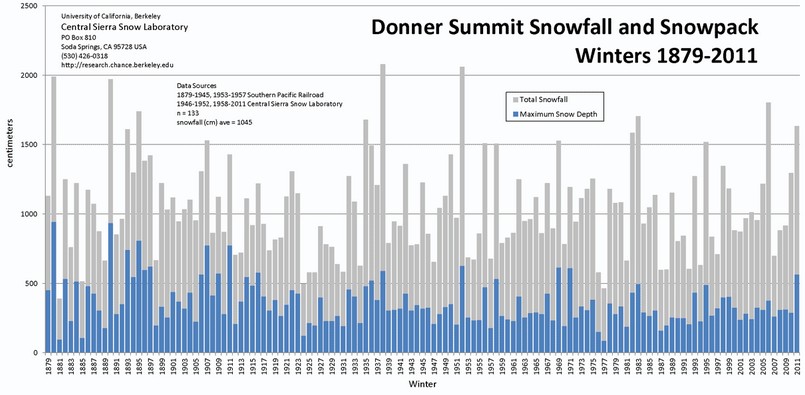Joe D’Aleo sent this over. California had a dry winter, so Scripps declares permanent drought.
E. Calvin Beisner 11:01pm May 16
Rising temperatures could eliminate two-thirds of Calif. snowpack
Anne C. Mulkern, E&E reporter
Published: Wednesday, May 16, 2012″The snowpack that helps provide water for California cities and farms could shrink by two-thirds because of climate change, according to new research submitted to the state’s Energy Commission.Higher temperatures appear likely to wipe out a third of the Golden State’s snowpack by 2050 and two-thirds by the end of the century, the Scripps Institution of Oceanography found. …”



A favorite trick of alarmists when discussing California snowpack is to talk about the amount of snowpack remaining on April 1st of each year, and to imply that this is an important metric for the availability of water for California’s developed water system. But the two have very little relationship, especially as you talk about their variation with temperature.
The last IPCC report looked at the implications of the computer model projections on April 1st snowpack levels over this century. It reported that at the upper end of temperature rise (4.5 – 5C), the 4/1 snowpack would be reduced 90% from 20th century levels. (This could well be true given the premise — June 1 snowpack now is probably reduced 90% from April 1.) This made big headlines, with Steven Chu, Obama’s energy secretary, saying that it was hard to see how California could survive this at all.
But the IPCC report also said that none of the models projected reduced precipitation in the California mountains, with most projecting increased precipitation, and some projecting more than a doubling. This means that the projections of reduced 4/1 snowpack are due solely to more precipitation falling as rain instead of snow, and more of the snow melting before 4/1 (as a lot does already).
But the idea that all of the precipitation that is not still snow on April 1 is not available to California’s water system is simply absurd. While there is a point that the reservoirs cannot be kept completely full while during the winter rainy/snowy season, and some early water might have to be released for flood control reasons, this is a very minor effect. UC Davis civil engineering professors asked to look at this issue concluded that there on the (overly conservative, they admitted) assumption that none of the added runoff before 4/1 could be retained, there would be only a 15% reduction in available water in these conditions. (And this could be easily solved with some additional reservoirs along the path of the aqueducts to where the water is used – not necessarily in the mountains.)